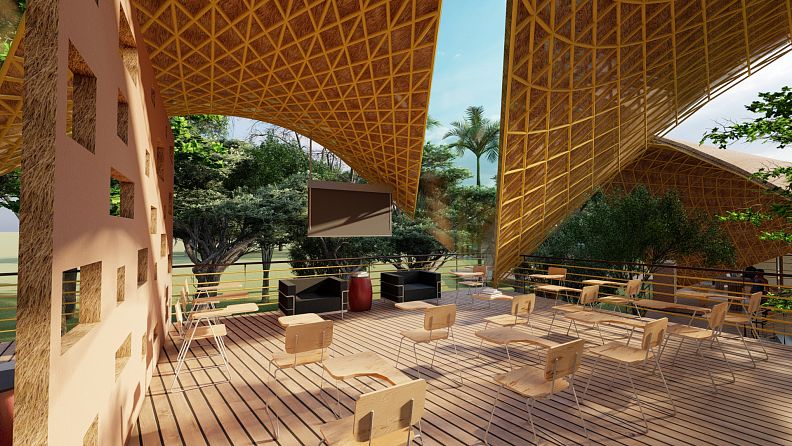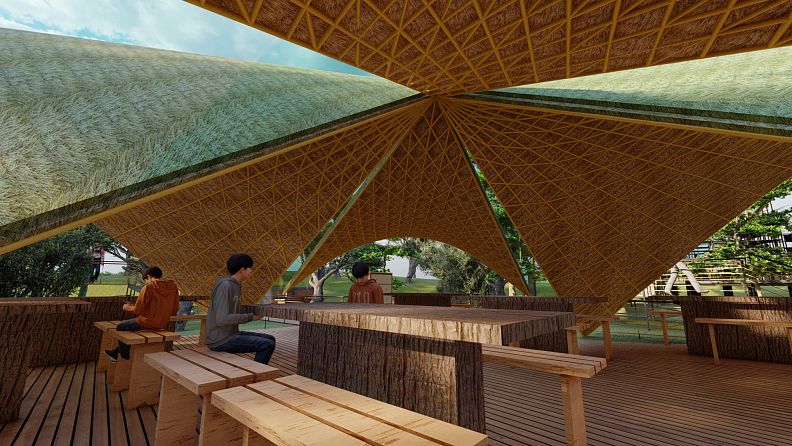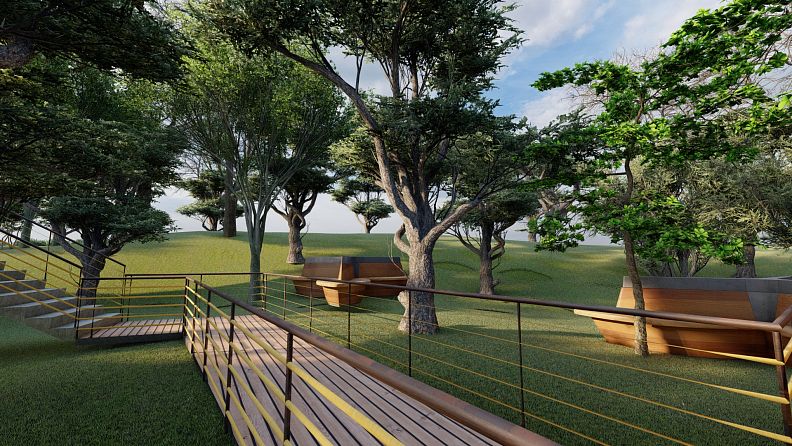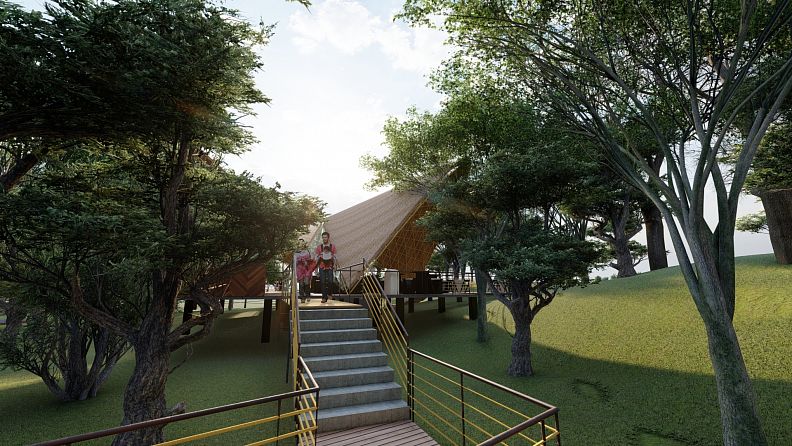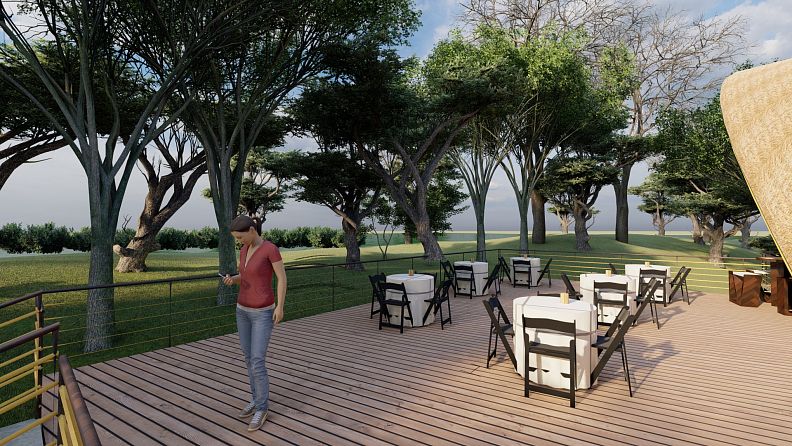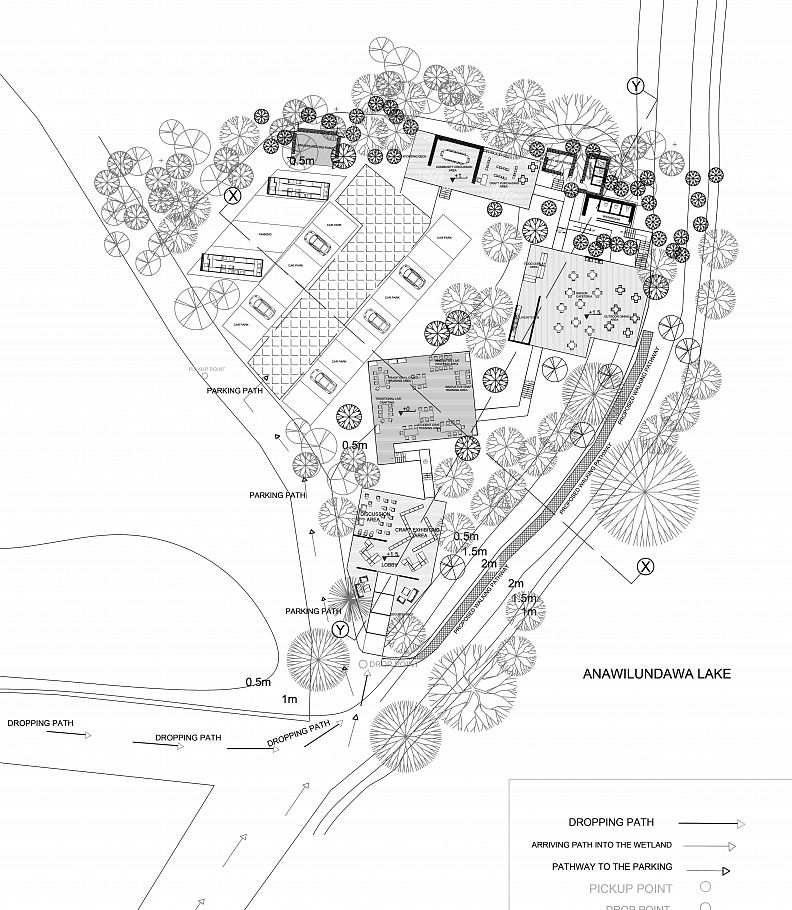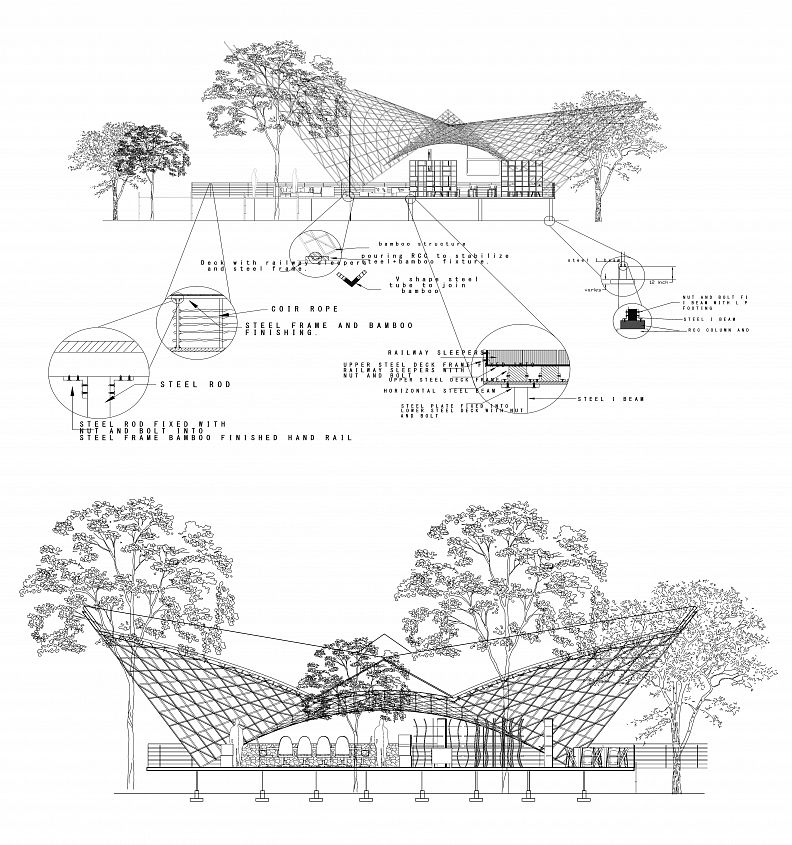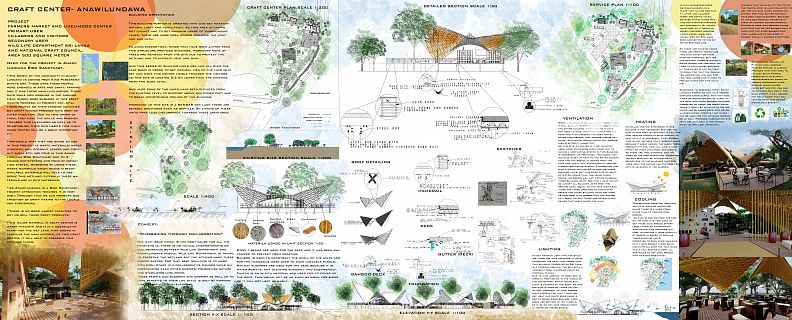Livelihood Center Anawilundawa (Craft Center)

Idea projektu
Project idea
Anawilundawa is a bird sanctuary as well as a RAMSAR wetland which is very precious treasure for Sri Lankans. Proposed building site belongs to the Anawilundawa bird sanctuary which is located in Chillaw, Puttalam district next to the Anawilundawa tank. Moreover, Anawilundawa was a village which was ruled by King Parakramabahu. Due to 3 eco-systems in particular coastal area, fresh water tanks and mangrove in Anawilundawa has added an extra value to this wetland. Hence this wetland has become a breeding site for the migrant birds and endemic birds in Sri Lanka. As this area is very sensitive place, all the strategies that have been proposed during this project are sustainable and eco-friendly methods.
Popis projektu
Problem identification
Before Anawilundawa become a renowned wetland, it was a village that belongs to King Parakramabahu. Anawilundawa was declared as a RAMSAR wetland site due to its unique surrounding and features. But this declaration have made a huge impact on Anawilundawa villagers who were the real inheritors of this wetland. These villagers had a mutual connection and an emotional bond with this wetland. they have depended on it to maintain their livelihood means. They have never meant to harm this eco-system because it was the heart of their lives. With the declaration as a RAMSAR site Wild Life Department had to impose strict restrictions to protect this bird sanctuary because it is a crime to damage those global assets. With these strict rules and regulations people in could not properly engage in their livelihood methods because all the livelihood means were relay on this wetland. due to this situation villagers and the Wild Life Department had many conflicts. Because of this conflict neither Wild Life Department could protect the wetland as instructed nor villagers have a proper livelihood method.
The root cause was not about imposing rules and regulations it was about unable to understand each other’s real motives. Both parties have a genuine feeling towards protecting the wetland. but Wild Life Department was unable to understand villagers needs and desires. Even those villagers could not grasp Wild Life Department intentions. Lack of mutual understanding between these two parties caused to have these unnecessary conflicts.
Solution and justification
According to the identified problem, through my solution need to cater sustainable and eco-friendly strategies for both parties to protect the bird sanctuary and maintaining a proper livelihood method. For that I have proposed a craft center in Anawilundawa. The reason behind it is that these villagers were used to do craft products as their livelihood during King Parakramabahu’s era. Even in present day these villagers do small craft items in their leisure time. As they got the talent, enthusiasm and the aspiration it will not be difficult and easily they can adjust to have their livelihood mean which is based on craft making because as they are already engaged in it. It is necessary to protect the wetland while fulfilling villagers’ desires because Wild Life Department wants to protect the bird sanctuary by any cost. For that I have proposed to use waste materials as their mean of craft making. By using those waste materials will help them to maintain their livelihood and protect the wetland from damages simultaneously. Coconut shell, coconut leaves, hay and water hyacinth are abundant in this wetland and those are the waste materials which can be use for craft making. Water hyacinth is the main material because that plant is known as a destructive plant for these wetlands and it will help to protect the wetland unintentionally. Through this both parties will achieve their targets and duties in a proper way. Moreover, this site is the most suitable place for the craft center because in Chillaw area, there is no such place which promotes waste material craft products and this site approximate distance to gain all the waste materials for the craft center. Apart from that this site located in the intersect point of Anawilundawa wetland.
Inspiration and concept
As previously mentioned to reduce lack of mutual understanding there should be proper connectivity between them. Not only them, all the people who interacts with this craft center. For that they need to connect with everyone physically, visually and emotionally. Even the activities should enhance the connectivity aspect. by having discussions, workshops, exhibitions, marketing facilities will help to enhance connectivity. Moreover, through level differences, wide openings, inter-connecting pathways and many more spatial arrangements have included in this project in order to achieve that connectivity aspects.
Inspiration- Traditional Assembly Hall in Sri Lanka.
It is the place where all the villagers gather for their charity works, gatherings, to share emotions etc. for that, it has built with several strategies to have physical, visual and emotional connectivity such as short wall to have visually connectivity, entrances from four side of the building to have physical connectivity and by commencing gathering activities they have strengthen the emotional connectivity as well. Those qualities have included in this project.
Concept - ''Blossoming through collaboration''.
All the villagers, Wild Life Department and visitors that visits this craft center needs to have a better communication, understanding between every one in order to achieve their goals. As previously mentioned the key factor to their success is mutual understanding and it is the lacking part of their lives. For that if they can work with everyone collaboratively it will be easy for them to enrich, blossom their life in many ways.
Technické informace
Strategies that have used in this project to achieve ultimate goal.
Goal is to provide a better livelihood method for the Anawilundawa villagers and protect the RAMSAR wetland simultaneously. in order to create mutual understanding, there should be physical, visual and emotional connectivity. For that this project has wide openings from all four sides of the unit, pathways to connect each building unit, responded to the natural terrain to gain more visual and physical connection, level differences within building units to have mainly visual connection and physical connection, less walls with permeable boundaries (solid & void concept) to create visual and physical connection. For that all the units are covered by only with a canopy which enables to provide a shelter as well as all other essential qualities to fulfill the goal. More collaborative spaces such as discussion space, working spaces, gathering spaces have incorporate in this project while creating visual connections and emotional bonds between people.
To reduce water, sound, light, land and air pollution this project has used few strategies. All the materials that are using is waste of the natural environment which is user friendly and eco-friendly. Utensils that made with clay, waste paper are used in cafeteria space. To reduce sound pollution this project will not include any kind of heavy machinery equipment to build this units or craft making process. Moreover, to travel around the wetland I have incorporate electric cars and it will reduce the CO2 emission and generating sounds. To reduce light pollution this craft center will be function during the daytime. Because as this is a bird sanctuary and a sensitive area visitor will be able to capture every moment during daytime as per their wish. And it is the most suitable time to attract visitors into this craft center. To reduce land pollution, most of the building units are built on steel stilts and to reduce carbon footprint these units have been spread all over the site. Through that all the natural scenarios can be capture effortlessly. By raising almost all units from the ground level has another intention. As this is a sanctuary there might be reptiles as well. To respond that species I have raised almost all units from the ground level.
Strategies to cooling, heat up, light and ventilation.
As there is Anawilundawa tank right next to the site I have used it to have passive cooling system. wind is coming from the tank and by using evaporation of it, helps to cool these building units greatly. And those vide openings are useful to capture that cool wind and at the same time it helps to provide a shading to these units. In order to get light into this center I have used sky lights on the canopy. And those wind openings also provide less heat and adequate light into the building. As I have proposed a rain harvesting method that helps to capture every single water drop. For that there is a gutter system which is under the deck and also in the thatch roof. Below shown diagrams and sketches will explain more about these strategies and sustainable and eco-friendly material usage.


